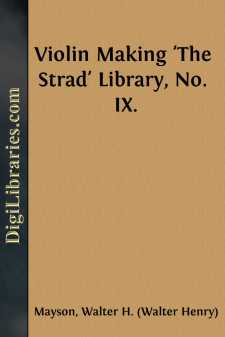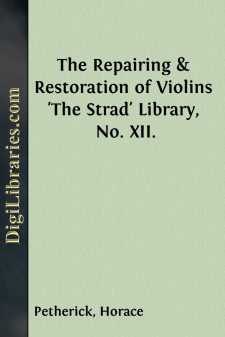Non-Classifiable
- Non-Classifiable 1768
Non-Classifiable Books
Sort by:
by:
Sarah Tytler
CHAPTER I. SIXTY-THREE YEARS SINCE. The 24th of May, 1819, was a memorable and happy day for England, though like many such days, it was little noticed at the time. Sixty-three years since! Do many of us quite realise what England was like then; how much it differed from the England of to-day, even though some of us have lived as many years? It is worth while devoting a chapter to an attempt to recall...
more...
by:
Lytton Strachey
CHAPTER I. ANTECEDENTS I On November 6, 1817, died the Princess Charlotte, only child of the Prince Regent, and heir to the crown of England. Her short life had hardly been a happy one. By nature impulsive, capricious, and vehement, she had always longed for liberty; and she had never possessed it. She had been brought up among violent family quarrels, had been early separated from her disreputable and...
more...
INTRODUCTION. Many admirable works on this interesting subject have appeared in several languages, but, to my mind, in a form too sternly technical, cold, if I may be allowed—the writers barely in touch with the anxious youth or man, who, as amateur, yearns to get at that knowledge of correct construction without which he scarce may hope to become a professional violin maker, some notable instances...
more...
by:
Michael Clarke
I. VERGIL, THE PRINCE OF LATIN POETS. The story of AE-ne'as, as related by the Roman poet Ver'gil in his celebrated poem called the AE-ne'id, which we are to tell about in this book, is one of the most interesting of the myths or legends that have come down to us from ancient authors. Vergil lived in the time of the Roman Emperor Au-gus'tus (63 B. C.—14 A. D.), grand-nephew and...
more...
by:
Horace Petherick
CHAPTER I.I. The art of the old liutaro of Italy may be said to have become during the last two or three centuries, identified with the art of constructing such musical instruments as are played with the bow. As was the case with other and kindred arts, that of violin making had its rise in one of the old cities of Italy, where from small beginnings it gradually spread to other places and over the...
more...
by:
Daniel B. Shepp
Page 3 PREFACE n all ages, men have been eager to tell and to hear new things; and before books were printed, travellers wandered abroad, bringing home wonderful stories of unknown lands. In the construction of this publication, the object is not to tell stories or relate experiences, but to exhibit, by carefully taken photographs, the great sights of the world as they exist to-day. The art of teaching...
more...
by:
Grace Greenwood
CHAPTER I. Sketch of the Princess Charlotte—Her Love for her Mother—Anecdotes—HerHappy Girlhood—Her Marriage with Prince Leopold—Her Beautiful Life atClaremont—Baron Stockmar, the Coburg Mentor—Death of the PrincessCharlotte. It seems to me that the life of Queen Victoria cannot well be told without a prefacing sketch of her cousin, the Princess Charlotte, who, had she lived, would have...
more...
by:
Haldane MacFall
THE BEGINNINGS In Paris, in the Rue Coquillière, Louis the Fifteenth being King of France—or rather the Pompadour holding sway thereover—there lived a witty, amiable fellow who plied the art of painting portraits in oils and pastels after the mediocre fashion that is called "pleasing." This Louis Vigée and his wife, Jeanne Maissin, moved in the genial enthusiastic circle of the lesser...
more...
CHAPTER I. INTRODUCTORY. There is no instrument of music made by the hands of man that holds such a powerful sway over the emotions of every living thing capable of hearing, as the violin. The singular powers of this beautiful instrument have been eloquently eulogised by Oliver Wendell Holmes, in the following words: "Violins, too. The sweet old Amati! the divine Stradivari! played on by ancient...
more...
by:
George Berkeley
1. My design is to show the manner wherein we perceive by sight the distance, magnitude, and situation of OBJECTS. Also to consider the difference there is betwixt the IDEAS of sight and touch, and whether there be any IDEA common to both senses. 2. It is, I think, agreed by all that DISTANCE, of itself and immediately, cannot be seen. For DISTANCE being a Line directed end-wise to the eye, it projects...
more...











